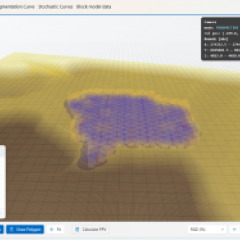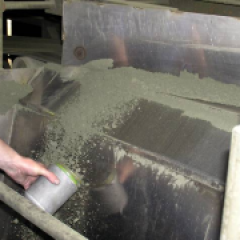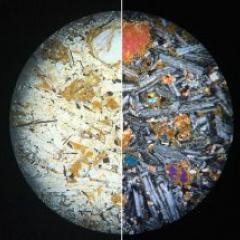Introduction
A Check-in Check-out (CICO) system requires all primary accounting streams to be sampled for assay. These samples form the basis for determining the grades of each respective stream. As with any other measurement taken in the plant, they will have a certain sampling accuracy and precision. However, in a majority of audits, JKTech finds that the main contributor of total sampling error is from the use of unrepresentative samplers.
Understanding Sampling Error
Sampling error is not limited to the physical extraction of material. It includes factors such as increment frequency, sampler design, and sample preparation.
Using the nomenclature by Morrison (2008, pg. 142), total sampling error (TEi) for sampling stage ‘i’ is comprised of individual components, summarised in the following equation:
TEi = FEi + GEi + QE2i + QE3i + WEi + DEi + EEi + PEi
Where:
- FEᵢ: Fundamental error
- GEᵢ: Grouping and segregation error
- QE2ᵢ / QE3ᵢ: Long-range and periodic quality fluctuation errors
- WEᵢ: Weighting error
- DEᵢ: Increment delimitation error
- EEᵢ: Increment extraction error
- PEᵢ: Preparation error
These components can be broadly grouped into error due to, the ore characteristics, sampling error and preparation and assay. The ore characteristics will have a significant influence on the variability of the stream assay. Higher variability with time requires a higher frequency of increment to achieve a given precision of the composite measurement. This requires assessment of the stream variability by techniques such as the production of a semi-variogram and typically occurs as part of sampler commissioning. Preparation (and assay error) is generally well understood, particularly for National Association of Testing Authorities (NATA) accredited laboratories.
In a majority of audits, JKTech finds that the main contributor of total sampling error is from the use of unrepresentative samplers. This results in weighting error, increment delimitation error and increment extraction error. Weighting error occurs when the mass of the increment collected is not proportional to the mass flow of the material represented and is observed when increments are aggregated into a period composite, such as a shift composite. Delimitation error results in particles not having an equiprobable chance to be collected into the sample. Finally, extraction error occurs when the sampler does not extract the intended sample boundary.
Representative vs. Unrepresentative Samplers
Mineral processing plants typically rely on automatic samplers that ‘cut’ across the stream at regular intervals to make a shift composite that is sent for assay. It is also common for all or a portion of each sample to pass through a stream analyser for process control purposes before being aggregated at the shift composite collection point.
The AMIRA P754 Code of Practice states that samplers used in primary accounting must take representative samples. Samplers that do not meet this requirement will have some degree of bias that cannot, by definition, be quantified (bias is not uniformly distributed around a central value) and it will be dependent on variables such as flow rate and density.
A representative sample whether from a stream or static lot (stockpile, tank etc) can only be obtained if:
- Every particle in the stream or lot has an equal chance of getting into the sample.
- The sample preserves the size and density distributions of the stream.
Case Study: Toll Treatment and Sampler Audit
In a JKTech audit, an operation planned to treat third-party ore alongside its own. The audit focused on the samplers used to track payable metal recovered from each ore source. At the time, a CICO system was not in place due to insufficient samplers.

Sampler types observed included:
- Full stream cross-flow cutter: Generally representative if properly maintained.
- Samstat (three-stage sampler): Practical alternative but introduces some delimitation error.
- Pressure pipe sampler: Not suitable for accounting due to inherent bias.
- T-piece off-take: Common but introduces both delimitation and extraction errors.
Even when a representative primary cutter was used, it was often undermined by a secondary unrepresentative cutter.
Conclusion
Representative sampling is critical for accurate metallurgical accounting. Errors introduced by unrepresentative samplers propagate through to calculated values, affecting production reporting and financial decisions. While manual sampling campaigns can estimate error, they are costly and only valid for a single point in time. The only reliable solution is to install and maintain samplers that meet the Code of Practice requirements.
Contact us for more information on our metallurgical accounting services.
References
Morrison, RD (ed), 2008. An Introduction to Metal Balancing and Reconciliation, Julius Kruttschnitt Mineral Research Centre.
Napier-Munn, TJ, 2015. Statistical Methods for Mineral Engineers - How to Design Experiments and Analyse Data, Julius Kruttschnitt Mineral Research Centre.



